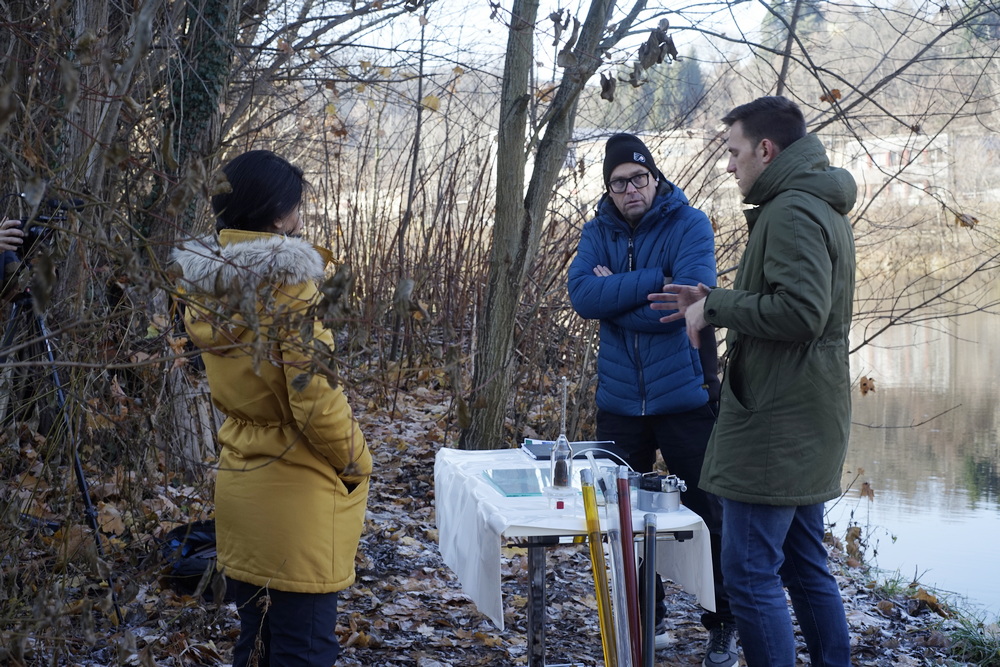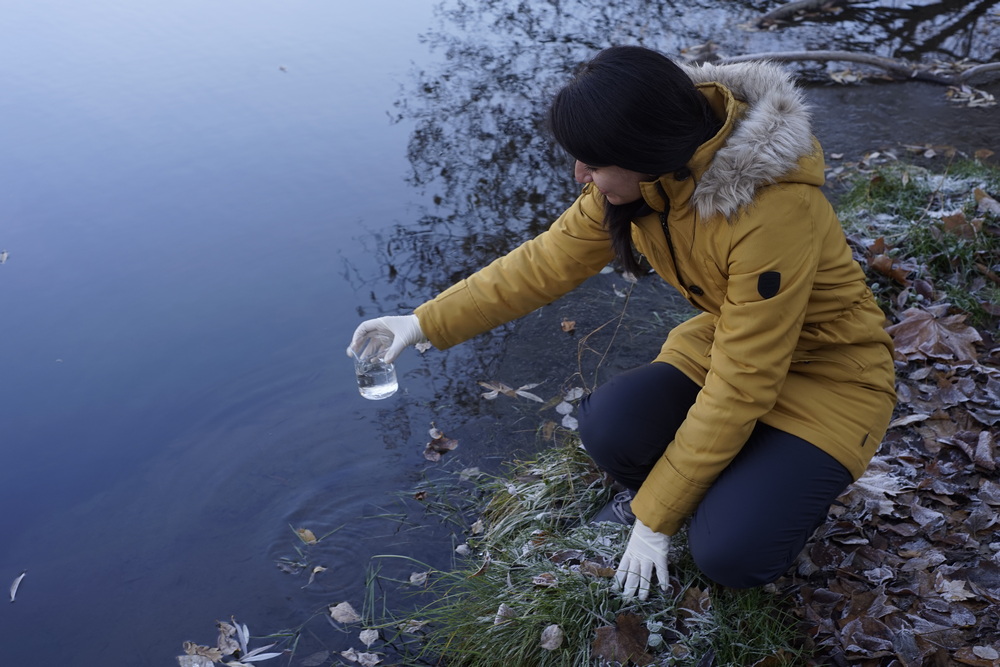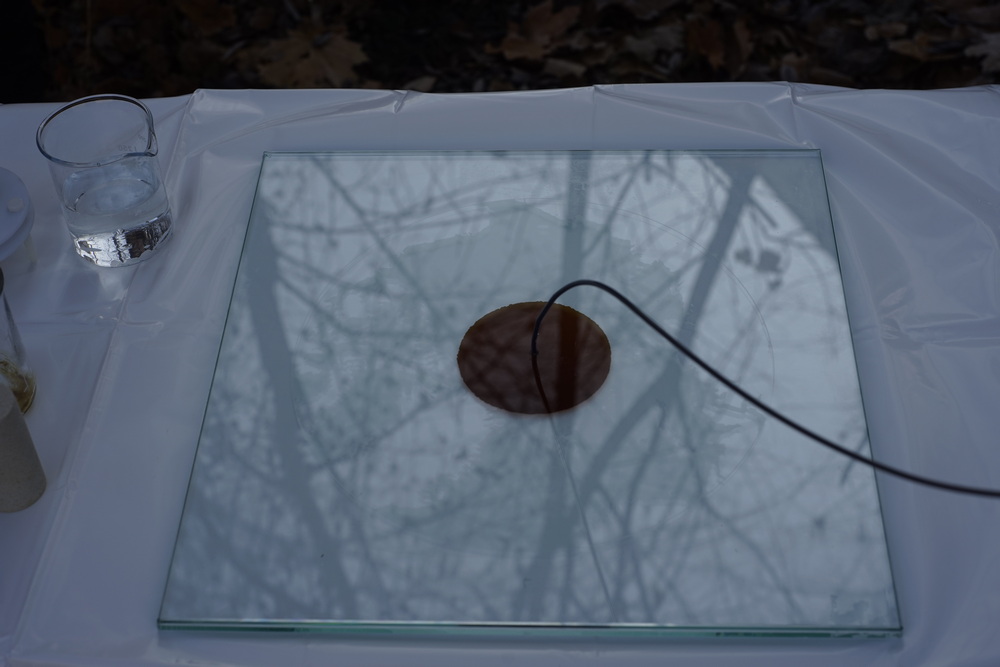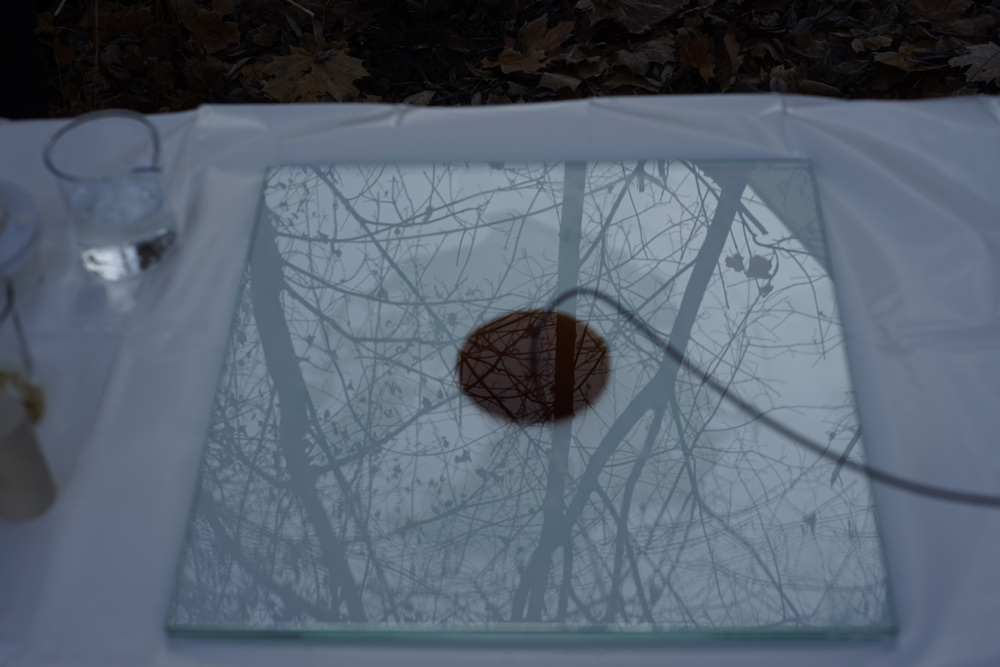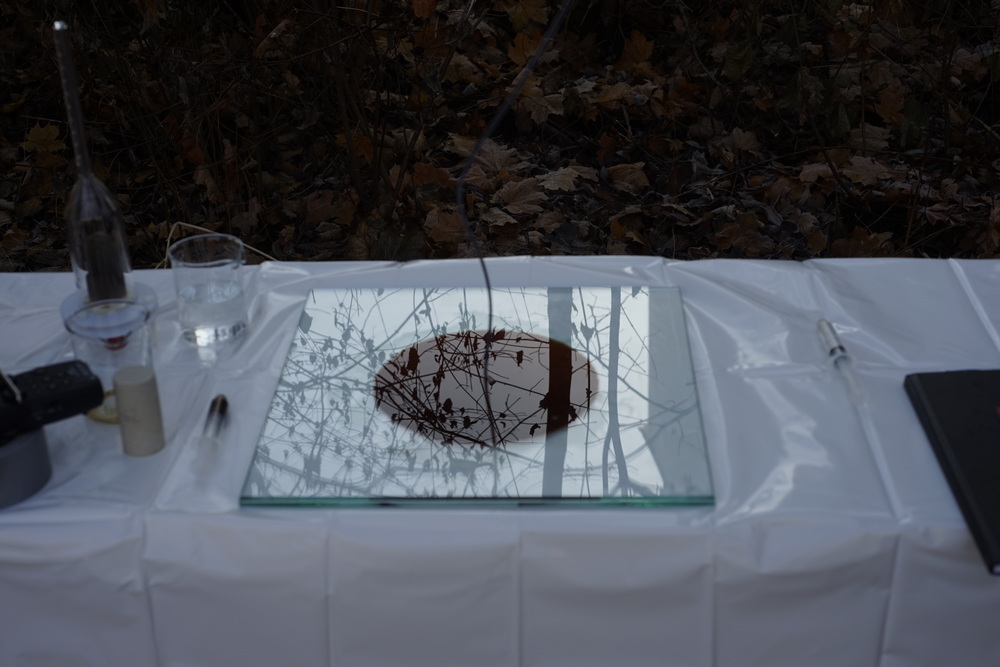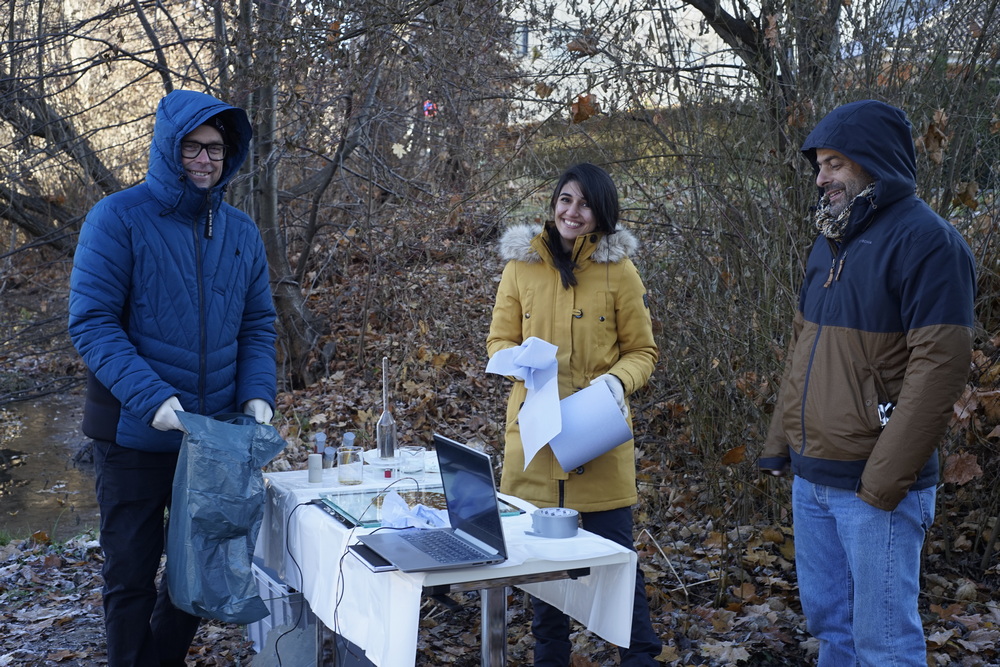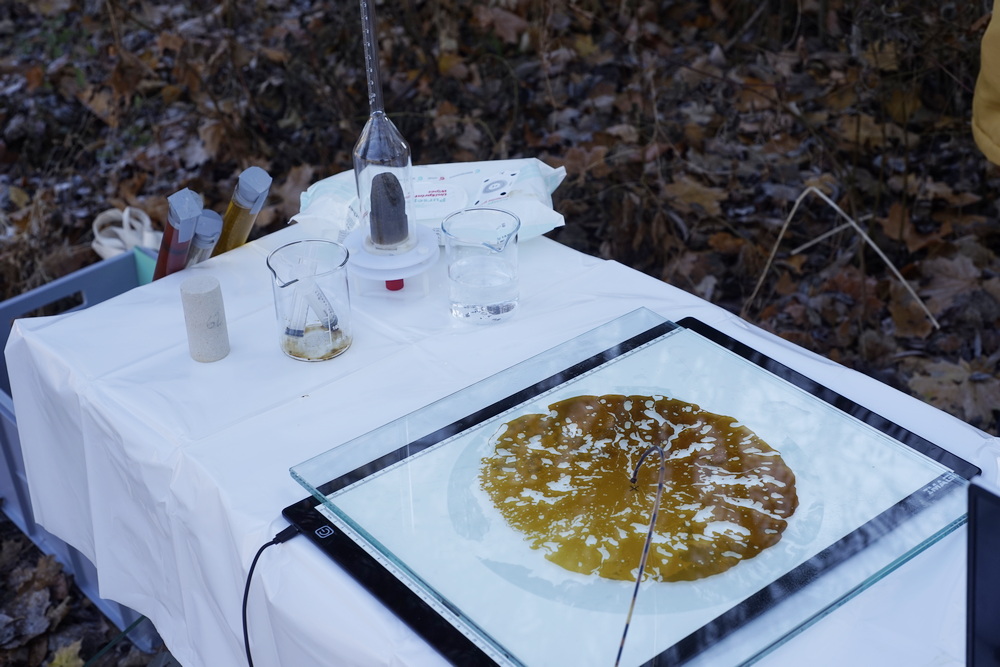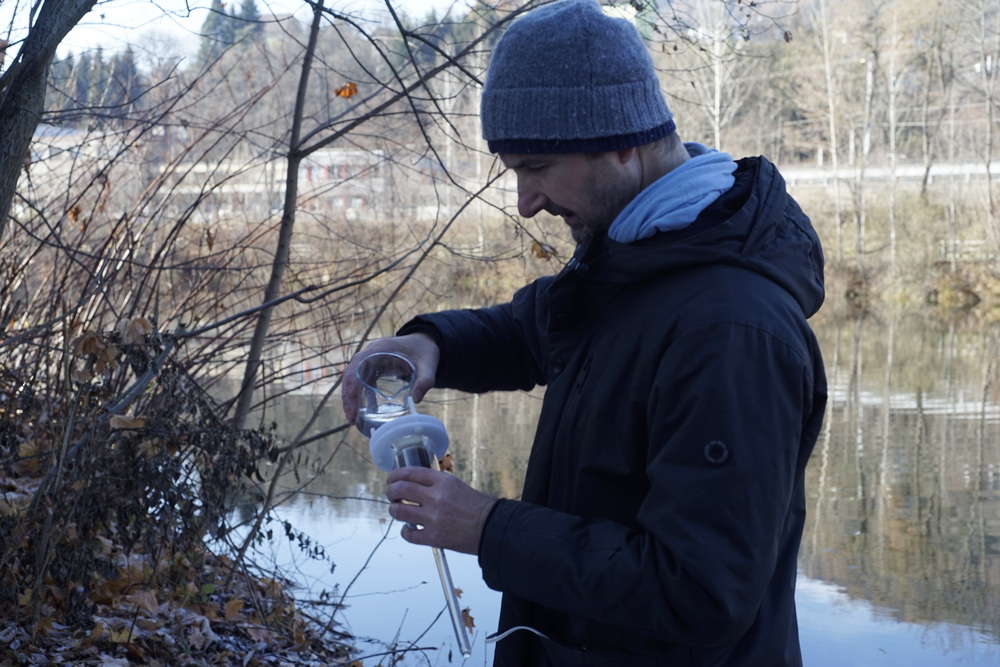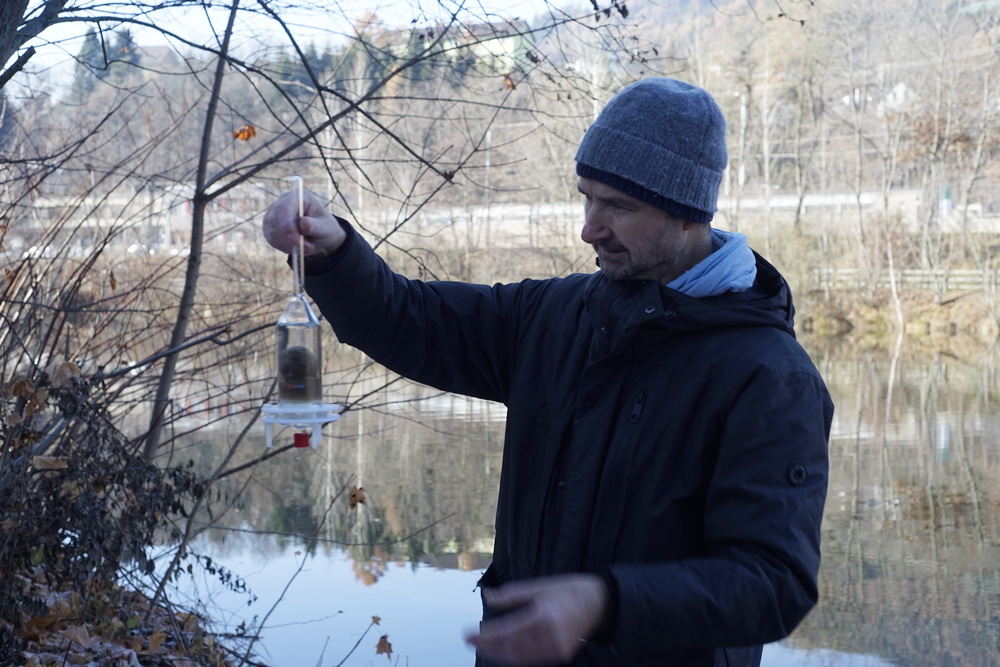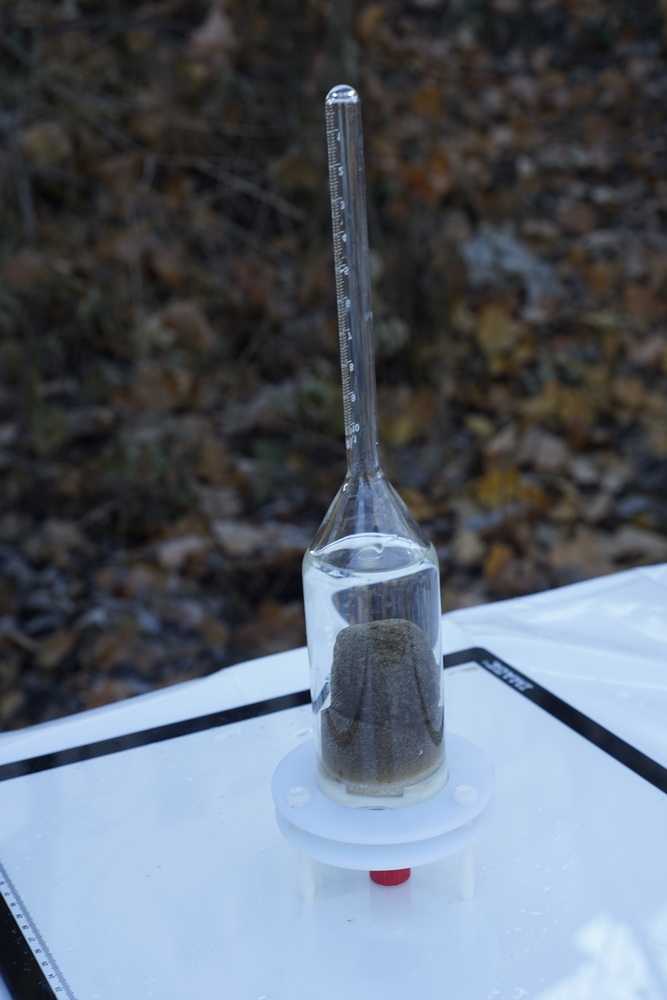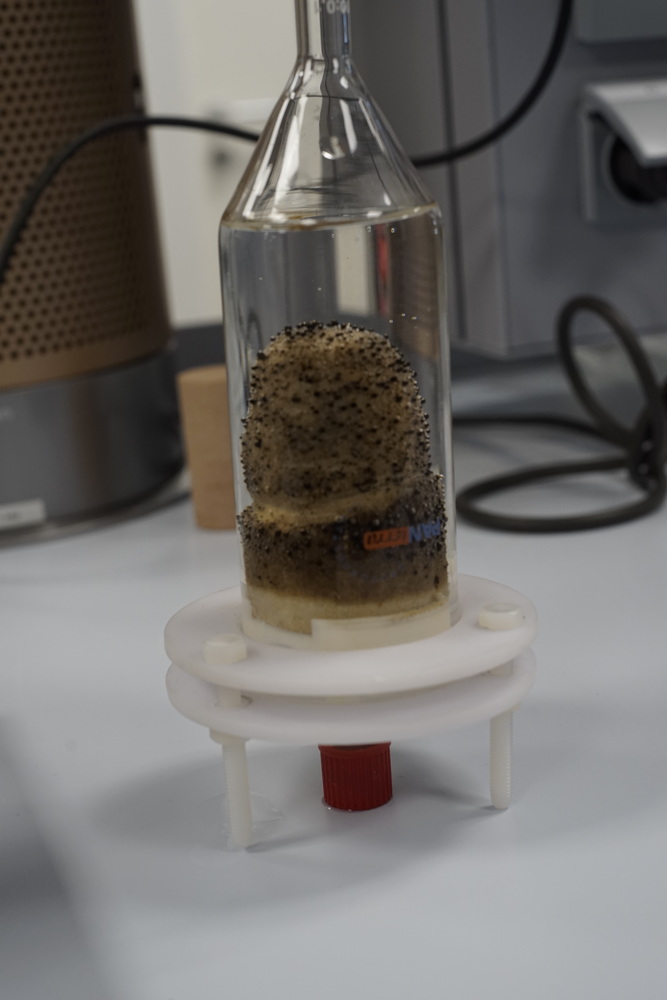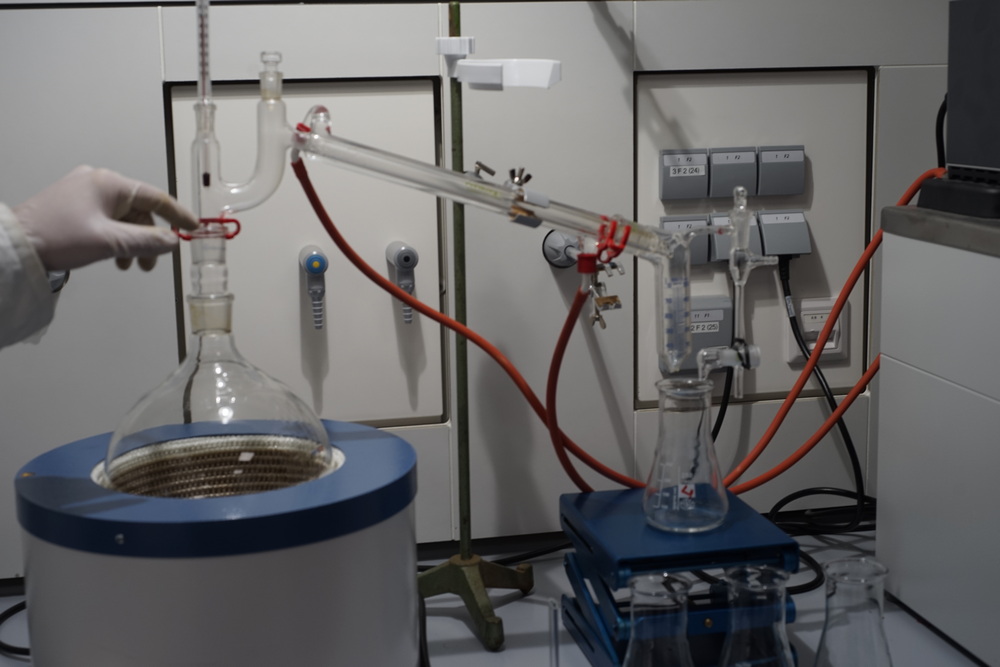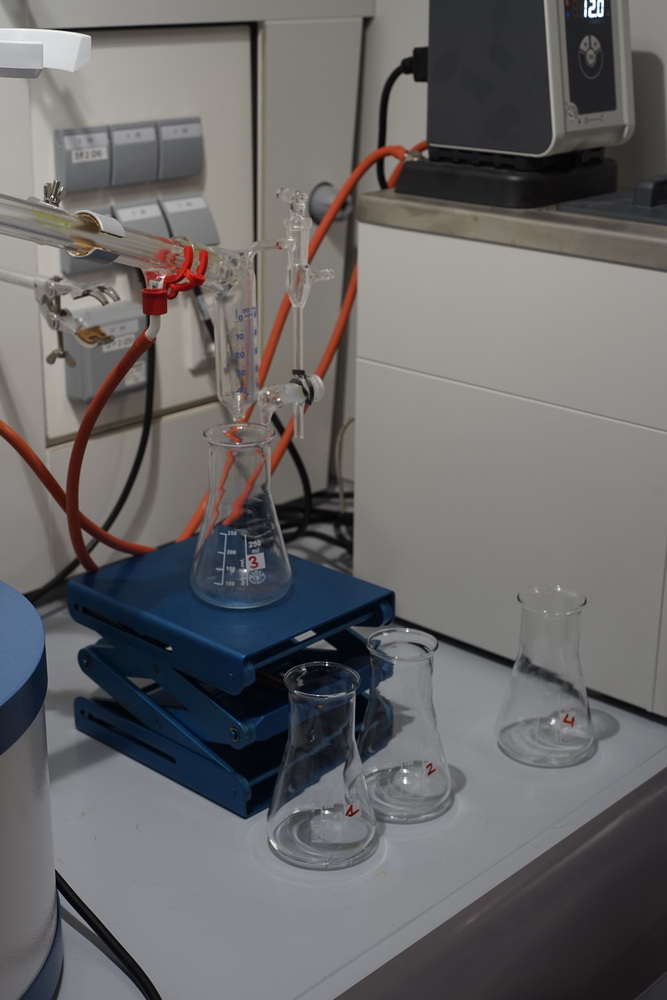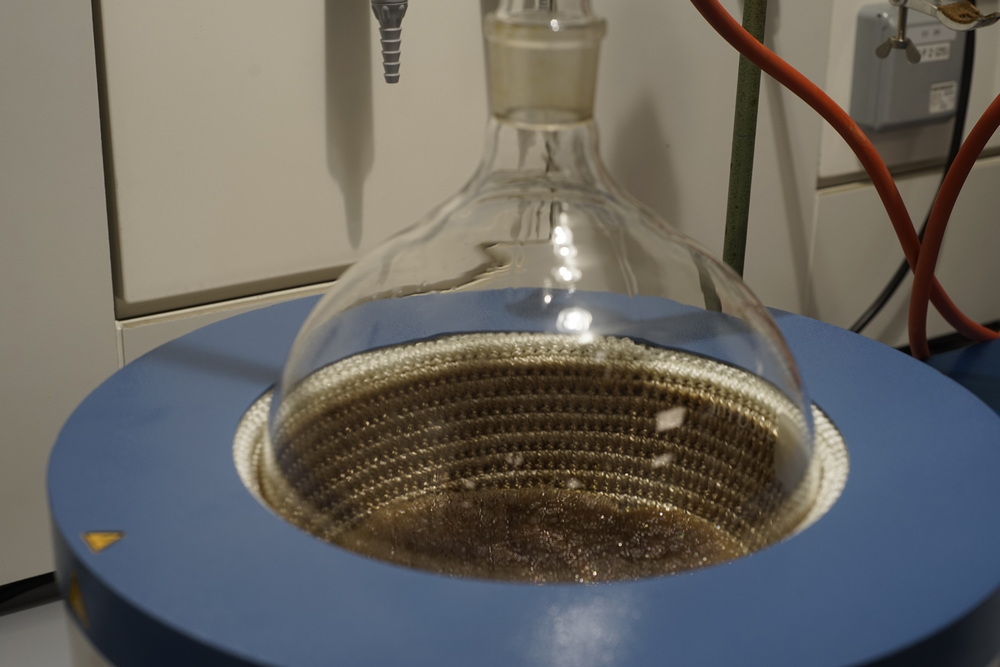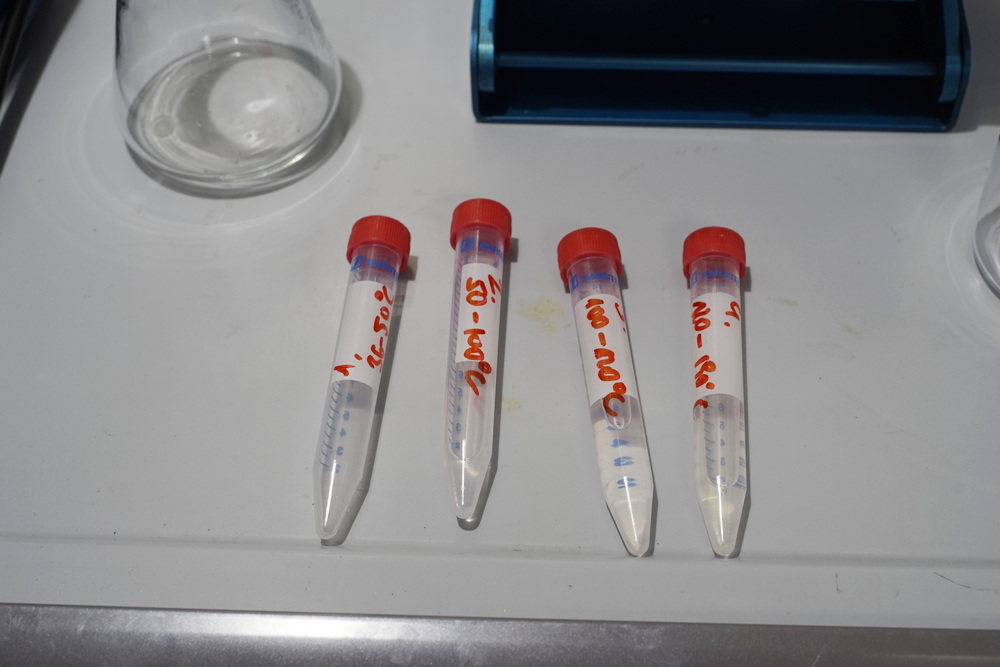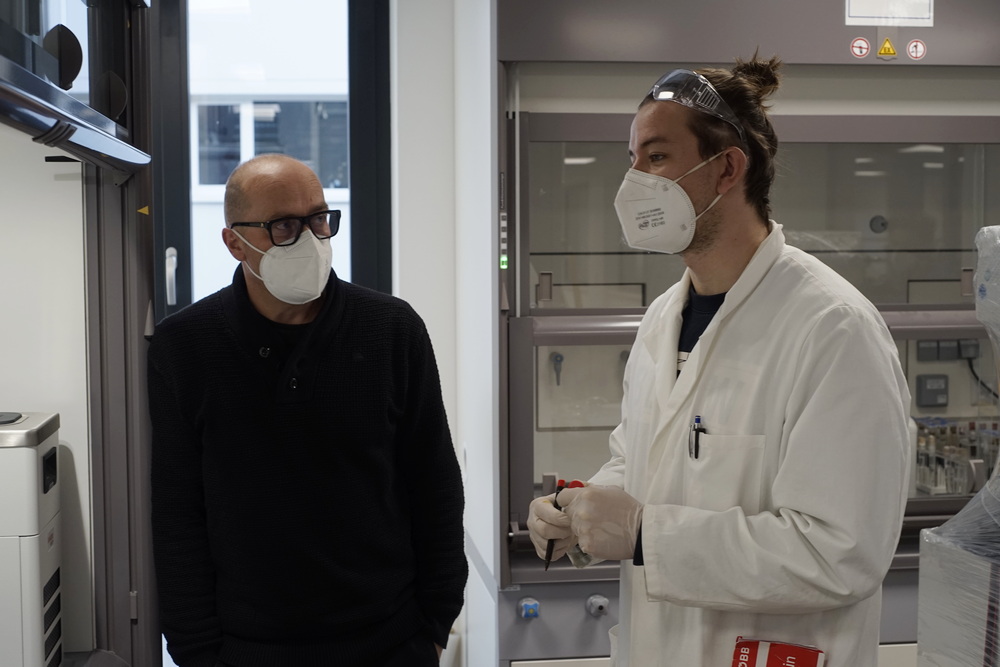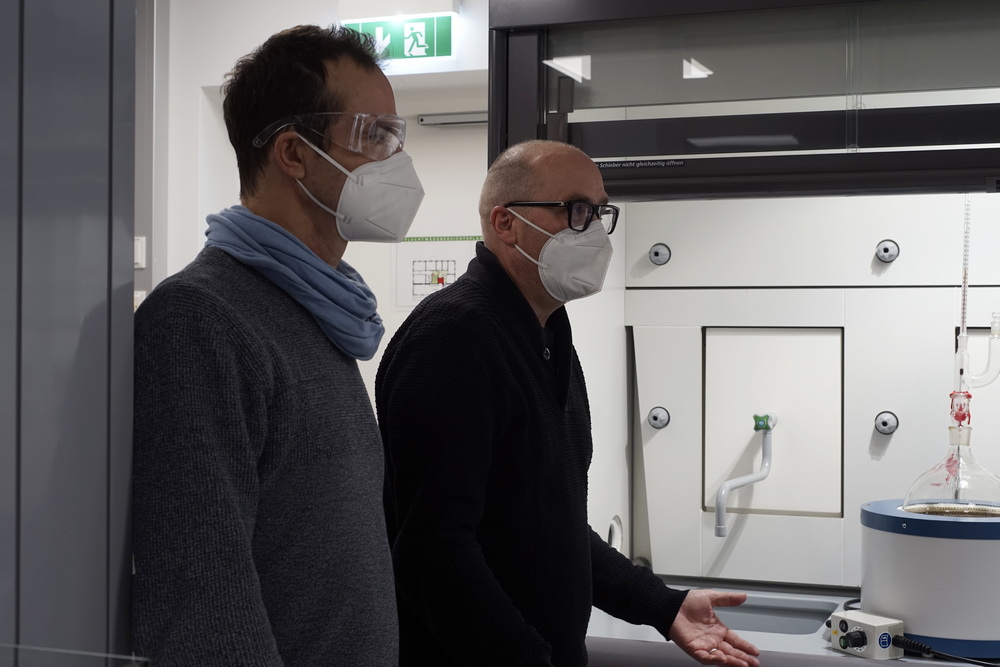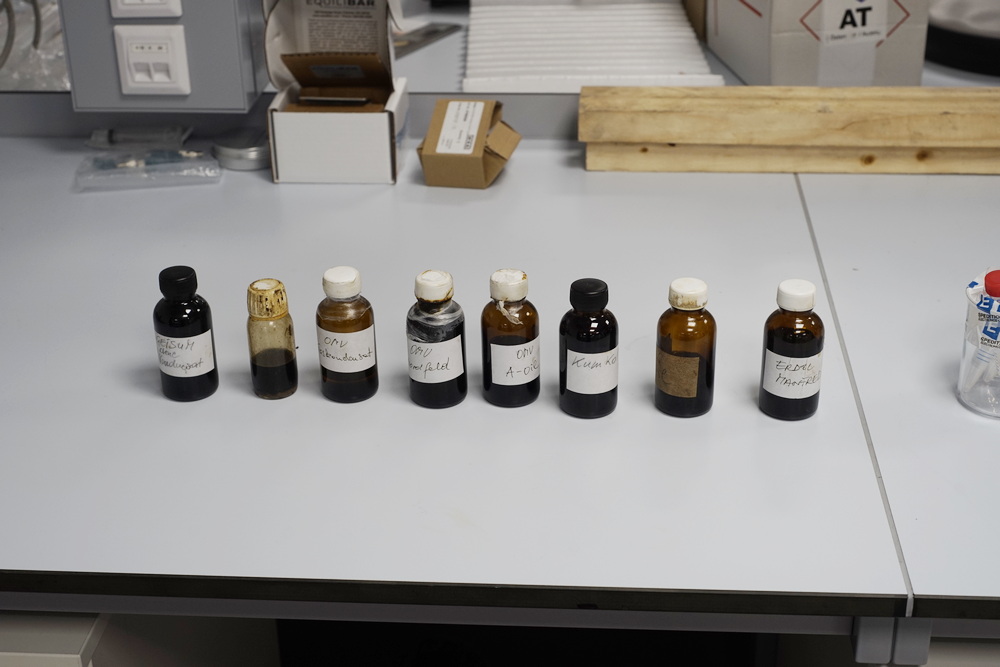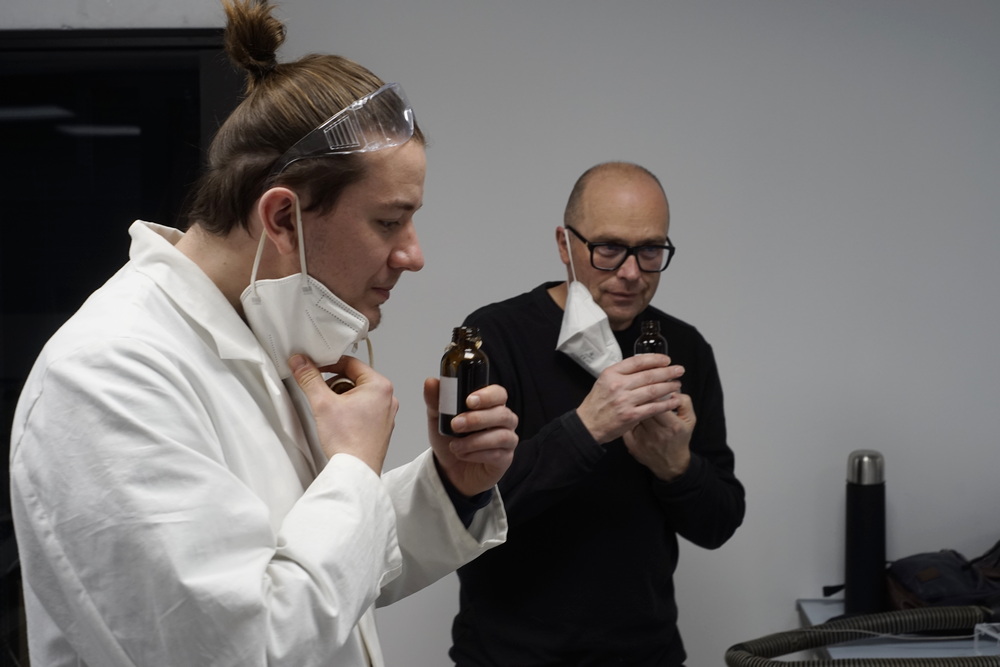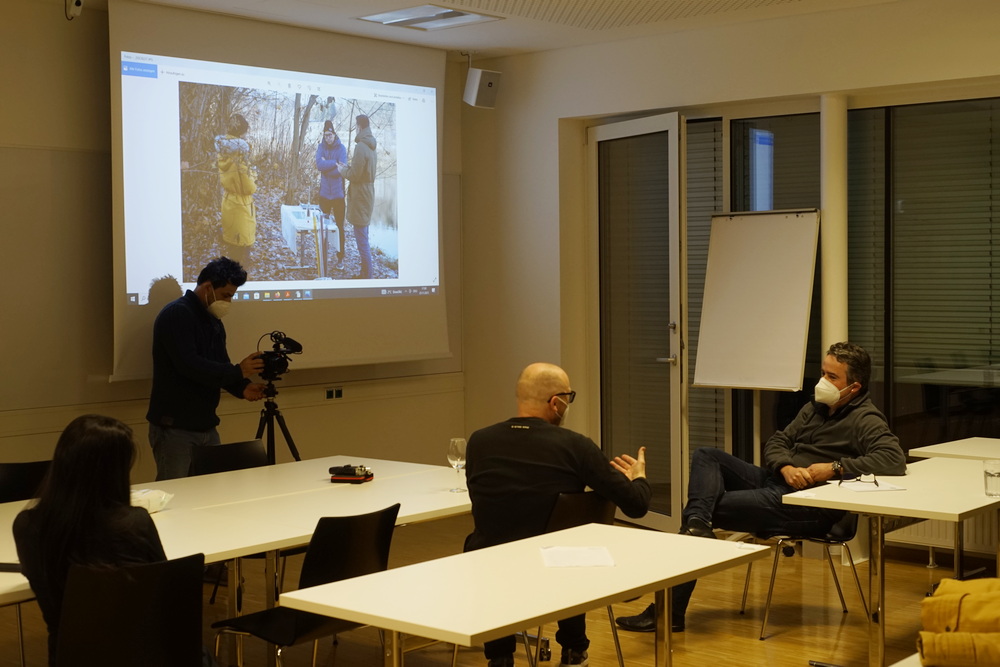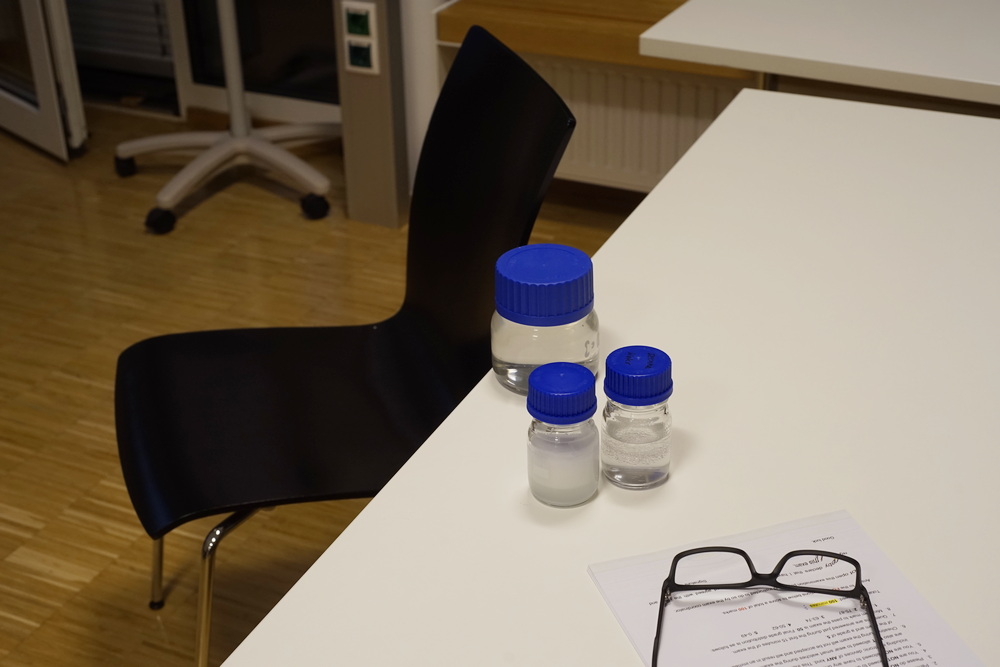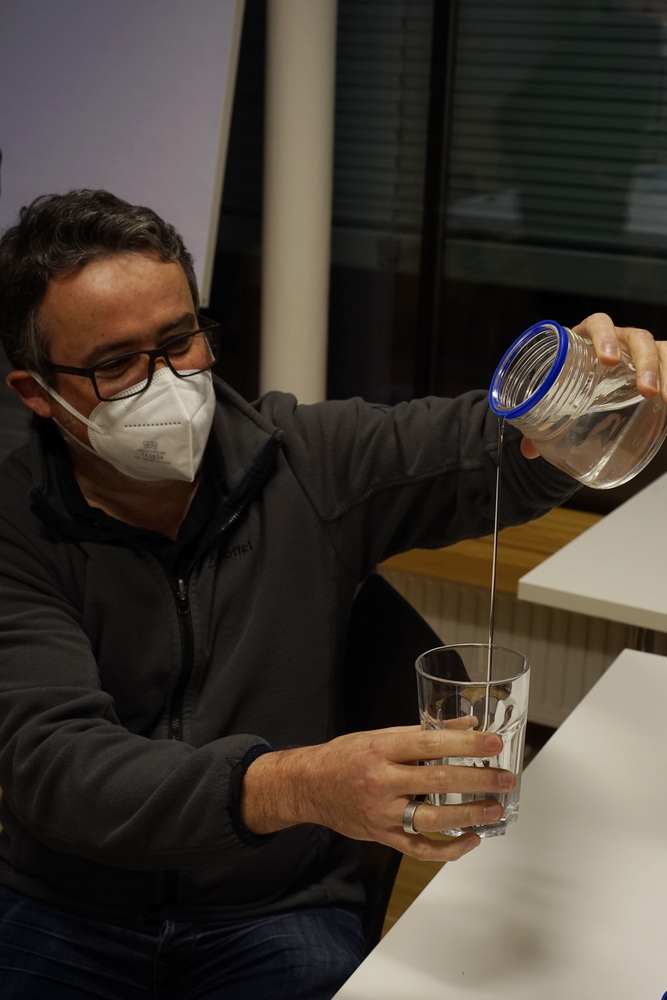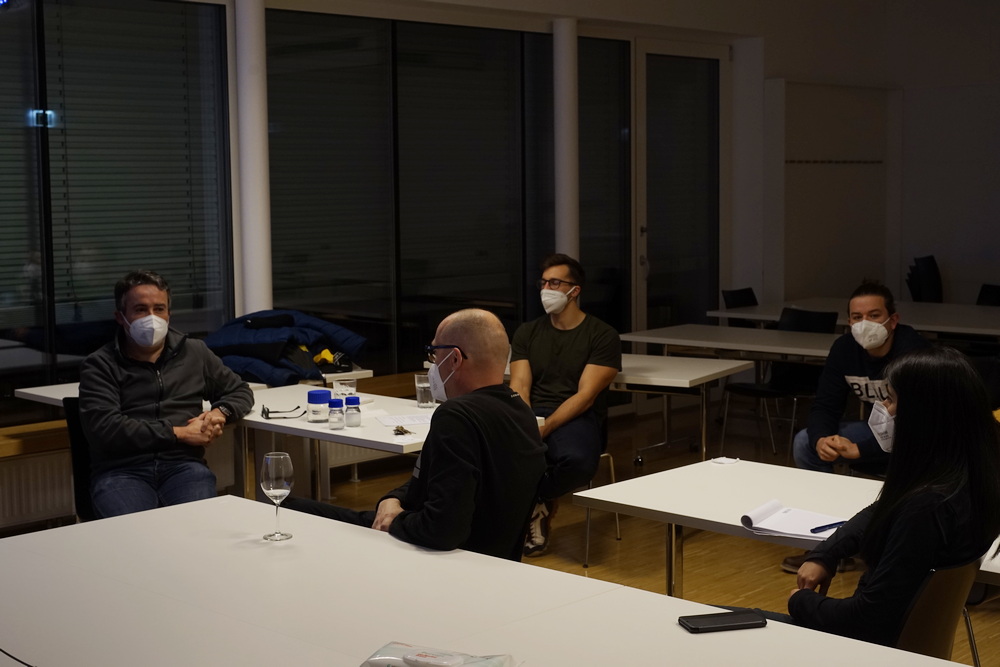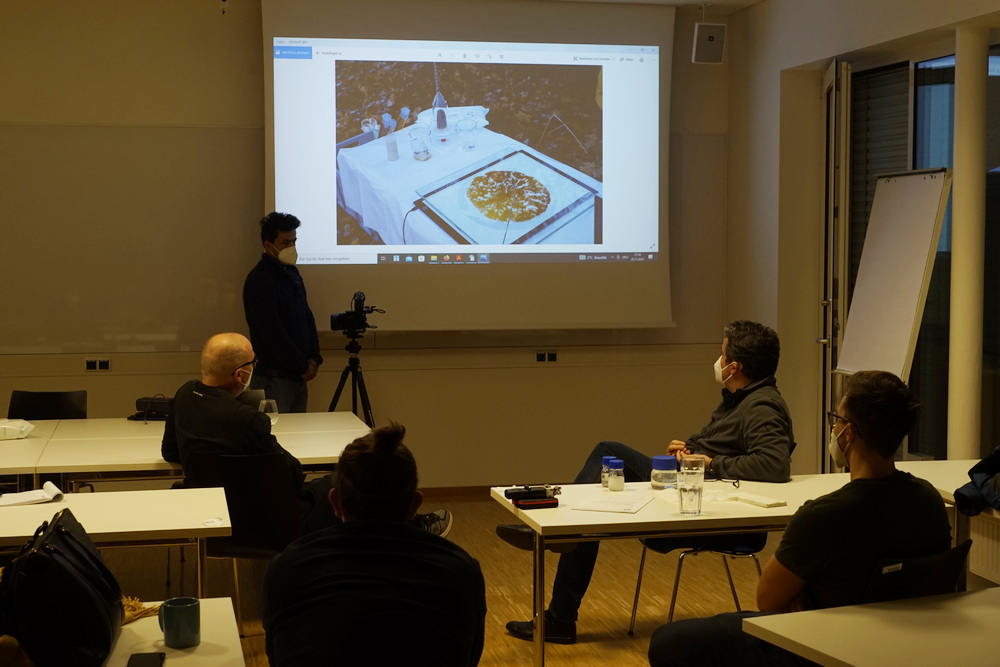Experiment IX, Leoben, 25. November 2021
This set of experiments was carried out on the riverbank next to the Department Petroleum Engineering building, with the participation of artist Herwig Turk, as well as Ernst Logar, Karez Abdulhameed, Patrick Jasik and Pit Arnold. A table was arranged to place the equipment on, surrounded by trees and accompanied by the slow flowing river of Mur, with the water close to the shoreline partially frozen.
The first experiment investigated the concept of viscosity, using four different fluids: water, crude oil, honey and ketchup, each in a closed pipe with a metallic ball flowing through the fluid medium. The cylindrical pipe needs to be held at a certain angle to allow the metallic ball to move through the viscous fluid. The time the ball takes to slide from one point to the other is used to calculate the viscosity of the fluid. The participants reflected on the differences between the fluid viscosities. Different fluids exhibit different rates of viscosity in corresponding conditions, such as manipulation of temperature, pressure, density, concentration, or kinematic of flow. The day’s low temperature range below 0°C also influenced the experiment.
Next, a Hele-Shaw experiment was conducted, with a map of the polar circle placed underneath the bottom glass plate of the cell. Fresh water from the river Mur was used as the displacing fluid to crude oil in this experiment. The beautiful channeling picture, or viscous fingering, of the experiment combined with the reflection of the surrounding trees on the glass plate opened a discussion about the difference between experimenting inside the lab and outside in nature.
Thirdly, an Amott test was carried out, by placing a partially saturated sandstone core in the Amott cell and then filling it with fresh river water. This test is one of the most widely used wettability measurements for reservoir cores in petroleum engineering, and defines two different indices: the Amott water index and the Amott oil index. After a certain time, the crude oil seems to escape the pores of the sandstone. The amount of escaped oil can be easily measured in the device graduated tube. Visually, the experiment is very remarkable. After a while the sandstone structure looked like an alga covering rocks in the sea. Logar associated it with an elderly looking man with deep emotions and dimensions.
Again inside the lab, the next experiment was fractional distillation, as this explains the complexity of crude oil while representing many of its primary properties. Fractional Distillation is applied in the refineries to separate the different kinds of petroleum products. The sample crude oil was fractioned into four different samples: the samples collected at temperature ranges of 35-50°C, 50-100°C, 100-120°C and 120-190°C. We discussed the possibility of using a self-distilled fraction to fly an aircraft, as well as to carry out a distillation with a mix of crude oil and blood to reflect the emergence of crude oil in modern lifestyles, economics and politics.
Lastly, we collectively reflected on the smells of eight different oil samples: crude oil from Egypt, from Aberdeen, gas condensate, from OMV, OMV A-oil, from Kazakhstan, from RAG Austria, and a sample Logar was given as a birthday present, with the sense of smell bringing up personal feelings and memories.
riverbank I viscosity I honey I ketchup I Hele-Shaw cell I Amott test I fractional distillation I smell
